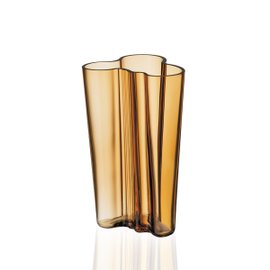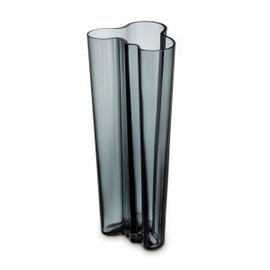Previous
Muuto: Scandinavian genius at work


Your dream house is one step away from you.
Subscribe to our newsletter and get 10% off orders of at least 100€!
Enjoy it and don’t miss out on our offers and updates.


Probably it has happened to you, as well. To be completely fascinated by an artist, a musician or a writer - an architect and/or designer in our case - and then to be surprised, perplexed or even disappointed by some aspects of his/her private life.
But it’s not to give for granted that those people we admire for their artistic or intellectual qualities are to admire also under a relational, social or ethical point of view. It’s a thing that could be hard to accept, at first, but sooner or later we need to get over it, even better if with a pinch of irony, because (although it’s a bit of a commonplace) nobody’s perfect.
Sometimes some details of the biography of our idols are just able to surprise us and strengthen the aura of uniqueness that envelops them… let’s try to explain it better through 6 examples.
It’s hard to believe, but the man who is considered one of the best architects and designers ever, also happened to give life to works that were not so perfect. The best example is the holiday villa for the Savoye family, which today is considered a real masterpiece of rationalism and UNESCO heritage.
The pillars that seem to lift the villa from the ground, the roof gardens, the bright interior and the importance given to the space devoted to the most intimate aspects of everyday life were all revolutionary elements at the time, and they generated a new model of home.
But maybe, the same fact of being too far ahead of the times (we are talking about the end of the ‘20s and the beginning of the '30s) has caused all the humidity and heat loss issues that generated the discontent of the buyer, who had invested on the house a considerable amount of money (800.000 francs).
In fact, it used to rain in the atrium, in Madame Savoye’s bathroom and in the bedroom of the eldest son, as we discover from the complaint letters sent from the lady to the renowned architect. The reconditioning works demanded by the owners were never satisfied by Le Corbusier, though: the restoration works only started in 1963, thanks to the French government, but the family had left the villa many years before.
It’s almost impossible not to recognize the greatness of Alvar Aalto and the genius in his work. What is not often recognized, is his wife’s decisive influence on his work. At least until 1949, when she died: until then, though, all the projects of the Aalto studio were signed by both of them.
Today we remember her especially for her contribution to industrial design - like the famous glasses - but although the role of Aino (who was an architect as well) was never clarified, it’s almost certain that it was her to deal with the interior design of many of her husband’s masterpieces. And it’s our mistake to admire only Aalto, forgetting that behind every great man there is a great woman.



The most famous couple of the design world are with no doubts Mr. and Mrs. Eames.

And he didn’t say it by chance for sure, since in the chauvinist post-war society of the time, Ray’s work was always in her husband’s shadow. Charles Eames, on his part, has always done everything he could to make her have the credit she deserved.
In fact, the work of the Eames studio was the result of a perfect collaboration and a rare elective affinity (to say it through a literary quotation); the studio was an explosive think-tank that gave life to unforgettable design pieces that are still very up-to-date.
And perhaps this is the reason why later Ray forgave Charles’s infidelity. This is one of the less renowned details of this couple’s story - usually the focus is on their perfect romance - but also confirmed by the interview in a documentary movie of a few years ago, The Architect and the Painter.
He loved to be called The master and he wasn’t really a model of modesty, but let’s be honest, he had his reasons.
Despite abandoning his Engineering studies after only two years, it was easy for Wright to find a job a the Adler & Sullivan studio, where the clients recognized his talent and they usually entrusted him for their needs.
Soon Wright decided to work as a freelancer, giving shape to unique concepts such as Villa Kaufmann (better known as Fallingwater).



He was 74 at the time and, when the driver got off the tram and confused him with a tramp - since he had no documents - he just dragged him on one side of the road and went back to work.
When he was finally recognized and taken to the Hospital de la Santa Creu, Gaudi was offered to move to a luxurious private villa. But Gaudi was and had always been a modest and humble person, so he refused and remained there until his death, two days later. An absurd and certainly undeserved death.
The accident happened while Antoni Gaudi was coming back from the building site of the Sagrada Familia, which is still waiting to be finished. And it will have to bit for a while, since the works won’t be completed until 2026.
Architect and sculptor, famous for his refusal of right angles and straight lines, loved and hated at the same time. And besides having a great talent, the Brazilian architect was also an extraordinary long-lived man: in fact, he died at 104, only 10 days before his 105th birthday.
Almost 7 years before, when he was 98, he got married for the second time with his secretary Vera Lucia Cabreira, 38 years younger than him. His only daughter Anna Maria tried to oppose to the wedding, but with no results at all since the almost-centenarian declared to be in love.

He had great vitality, also expressed by his work until the very last days of his life, when he was still dealing with the projects he has always considered an ideal of renovation and enhancement of the human condition.




 Back to
Back to
Size*
Quantity*




